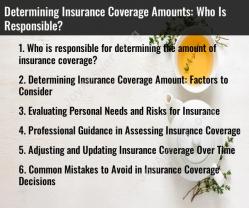How to choose the right type of life insurance?
Choosing the right type of life insurance can be a critical financial decision, as it provides financial protection for your loved ones in the event of your death. To make an informed decision, consider the following steps and factors:
Assess Your Needs:
- Determine why you need life insurance. Common reasons include income replacement, paying off debts, covering funeral expenses, or leaving a financial legacy.
- Assess your current and future financial obligations, including mortgage, loans, education costs, and your family's lifestyle.
Understand the Types of Life Insurance:
- There are two primary types of life insurance: term life insurance and permanent life insurance.
- Term Life Insurance:
- Provides coverage for a specific term, such as 10, 20, or 30 years.
- Offers pure death benefit protection.
- Generally, less expensive than permanent life insurance.
- Permanent Life Insurance:
- Provides lifelong coverage.
- Includes a savings or investment component (e.g., cash value).
- Types of permanent insurance include whole life, universal life, and variable life.
Consider Your Budget:
- Determine how much you can afford to pay for life insurance premiums. Keep in mind that permanent life insurance is more expensive than term life insurance.
Evaluate Your Financial Goals:
- If you want both protection and a savings/investment component, permanent life insurance might be a good choice. However, it comes with higher premiums.
- If you primarily need protection for a specific period (e.g., until your mortgage is paid off or your children are financially independent), term life insurance may be more suitable.
Assess Your Health and Age:
- Your health and age impact your insurability and premium rates. Younger and healthier individuals generally pay lower premiums.
- Consider purchasing life insurance when you're young and healthy to lock in lower rates.
Compare Quotes:
- Obtain quotes from multiple insurance providers to compare costs and coverage options.
- Make sure to work with reputable insurers with a strong financial rating.
Consult a Financial Advisor:
- Seek advice from a financial advisor or insurance professional who can help you assess your specific needs and provide personalized recommendations.
Read and Understand the Policy:
- Carefully read the policy documents, including the terms, conditions, and any exclusions.
- Ensure you understand the benefits, premiums, and how the policy works.
Review and Update Regularly:
- Life insurance needs change over time. Periodically review your coverage to ensure it aligns with your current financial situation and goals.
Additional Considerations:
- Riders: Explore optional policy riders that can enhance your coverage, such as a critical illness rider or a disability waiver of premium rider.
- Beneficiary Designation: Choose your beneficiaries carefully, and update this designation as your circumstances change.
- Policy Duration: Select a policy term or coverage period that meets your needs (e.g., until retirement or until your children graduate).
Ultimately, the right type of life insurance depends on your individual circumstances, financial goals, and budget. Take your time to research and consider the options, and consult with a financial professional if you need guidance in making the best choice for your situation.
Choosing the Right Life Insurance: A Step-by-Step Guide
Step 1: Assess your needs and goals.
What are you hoping to achieve with life insurance? Are you trying to protect your income for your family if you die unexpectedly? Pay off debts? Leave a legacy? Once you know what you're trying to accomplish, you can start to determine how much coverage you need.
Step 2: Consider your budget.
Life insurance premiums can vary widely, so it's important to find a policy that fits your budget. Keep in mind that your premiums will likely go up as you get older, so it's a good idea to start with a policy that you can afford now.
Step 3: Compare different types of life insurance.
There are two main types of life insurance: term and permanent. Term life insurance provides coverage for a specific period of time, such as 20 or 30 years. Permanent life insurance provides coverage for your entire life.
Term life insurance is generally the most affordable type of life insurance, but it's important to note that your coverage will end if you don't renew your policy. Permanent life insurance is more expensive than term life insurance, but it provides lifetime coverage and can also build cash value over time.
Step 4: Choose a life insurance company.
When choosing a life insurance company, it's important to consider the company's financial strength and reputation. You should also compare the different policies that are available from different companies.
Step 5: Apply for life insurance.
Once you've chosen a life insurance company and policy, you'll need to apply. The application process will vary depending on the company, but you'll typically need to provide some basic information, such as your age, health, and income.
Term vs. Whole Life Insurance: Which Is the Best Fit for You?
The best type of life insurance for you will depend on your individual needs and goals. If you're looking for affordable coverage for a specific period of time, term life insurance is a good option. If you're looking for lifetime coverage and the ability to build cash value, whole life insurance may be a better choice for you.
Here is a table that compares term and whole life insurance:
| Feature | Term life insurance | Whole life insurance |
|---|---|---|
| Coverage period | Specific period of time | Lifetime |
| Premiums | Generally more affordable | Generally more expensive |
| Cash value | No cash value | Builds cash value over time |
Assessing Your Life Insurance Needs and Goals
To assess your life insurance needs and goals, you should consider the following factors:
- Your income. How much income do you generate? If you have dependents, how much money would they need to replace your income if you died?
- Your debts. How much debt do you have? If you died, would your dependents be able to pay off your debts?
- Your assets. How much money do you have saved in investments and other assets? If you died, would your dependents have enough money to live comfortably?
- Your family's needs. What are your family's financial needs? Do you have young children? Are you helping to care for aging parents?
Once you have considered these factors, you can start to determine how much life insurance coverage you need.
Comparing Life Insurance Providers: How to Make the Right Choice
When comparing life insurance providers, it's important to consider the following factors:
- Financial strength. Choose a life insurance company with a strong financial rating. This will help to ensure that the company will be able to pay out your death benefit if you die.
- Reputation. Read online reviews and talk to other people who have experience with different life insurance companies. This can help you to get a sense of the company's reputation and customer service.
- Policy options. Compare the different policy options that are available from different companies. Make sure to choose a policy that meets your specific needs and goals.
- Price. Compare the prices of different policies from different companies. Keep in mind that the cheapest policy may not be the best policy for you.
The Importance of Consulting with a Life Insurance Professional
A life insurance professional can help you to assess your needs and goals, and choose the right policy for you. They can also answer any questions you have about life insurance.
Here are some benefits of consulting with a life insurance professional:
- They can help you to understand the different types of life insurance and choose the right policy for your needs.
- They can help you to determine how much coverage you need.
- They can compare different policies from different companies and help you to find the best deal.
- They can answer any questions you have about life insurance.












